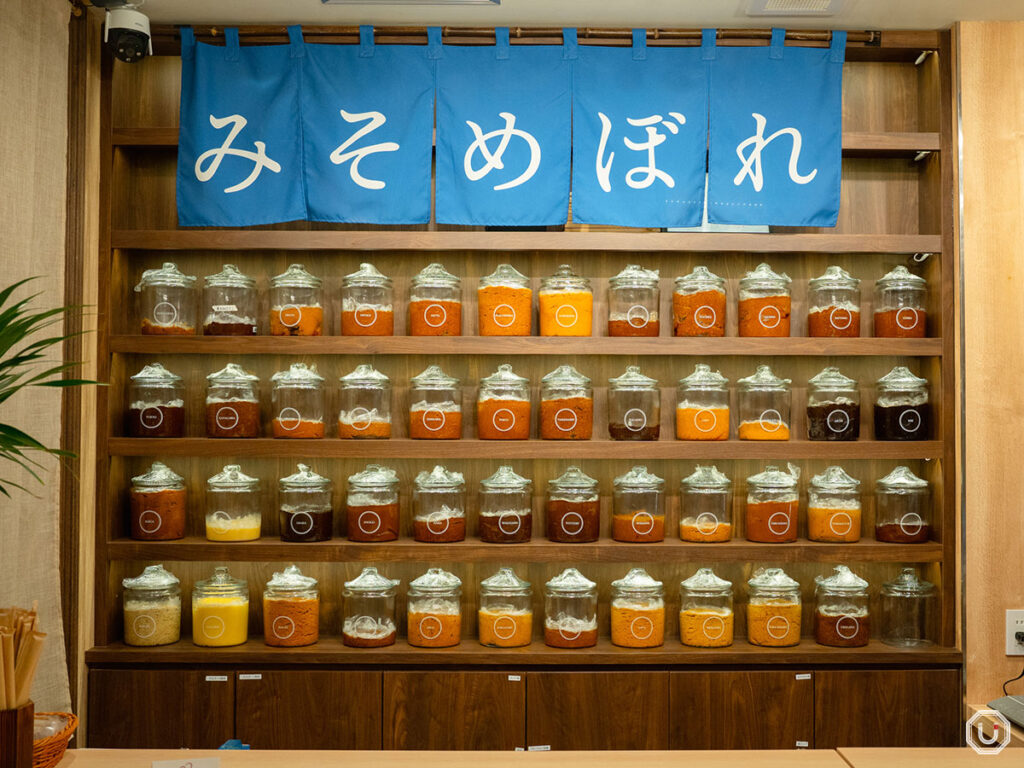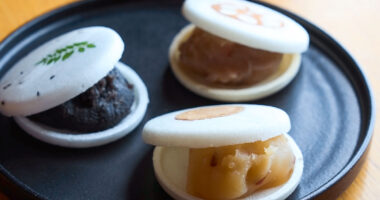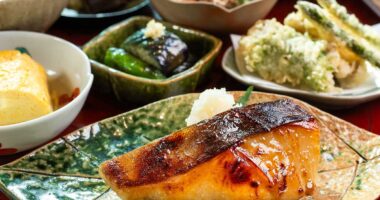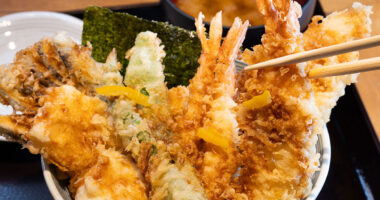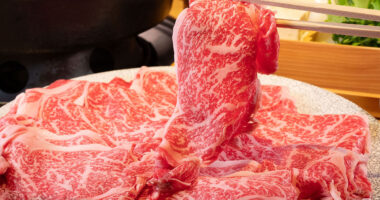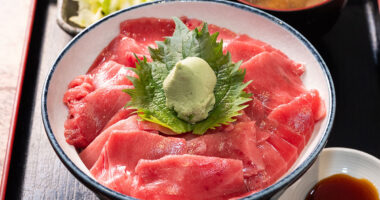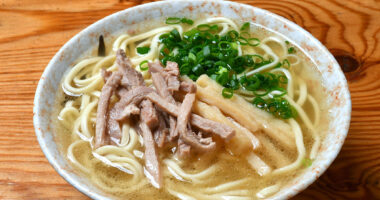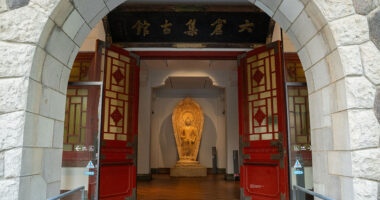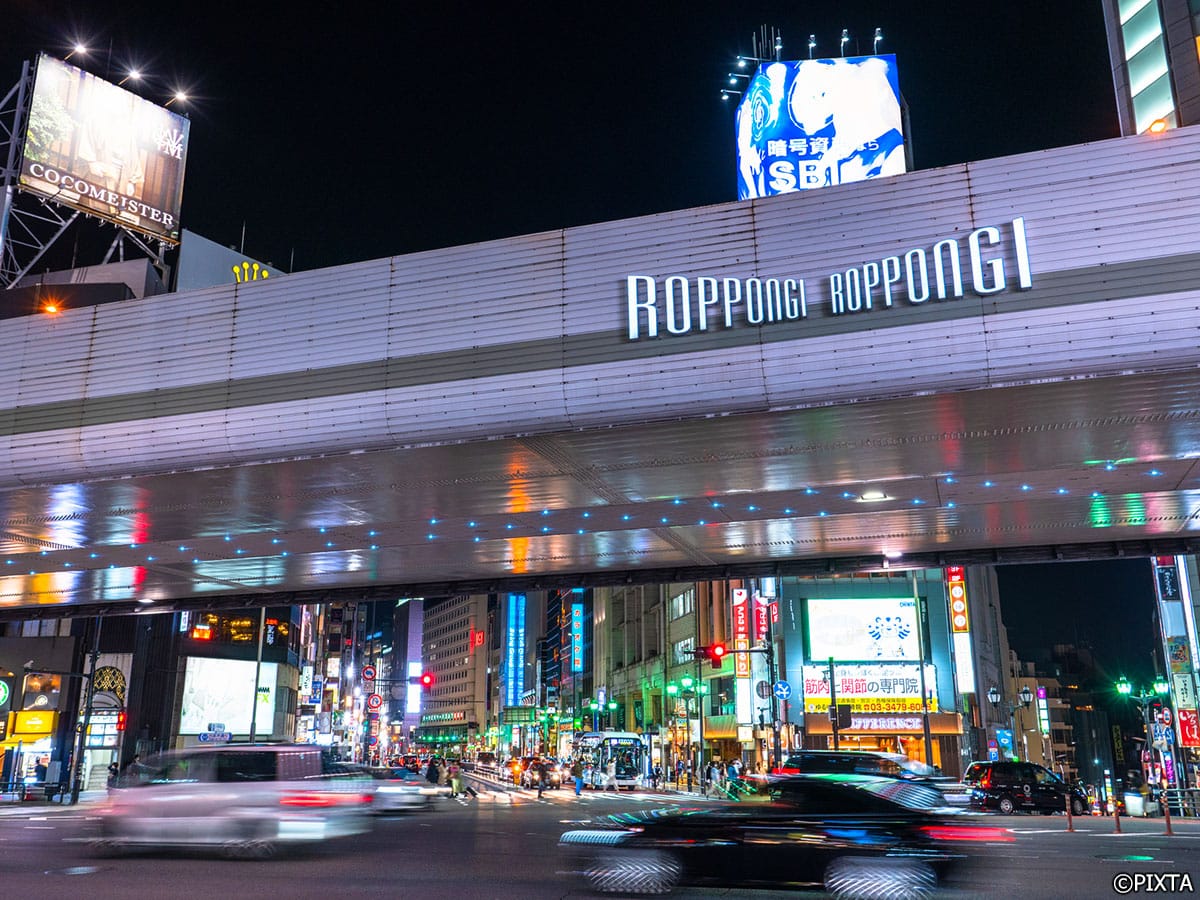Miso, a traditional Japanese seasoning with a history spanning over a thousand years, is made by fermenting soybeans, concentrating their natural umami.
It has countless uses—from miso soup to grilled and simmered dishes—making it a cornerstone of Japanese culinary culture and one of the country’s most beloved fermented foods.
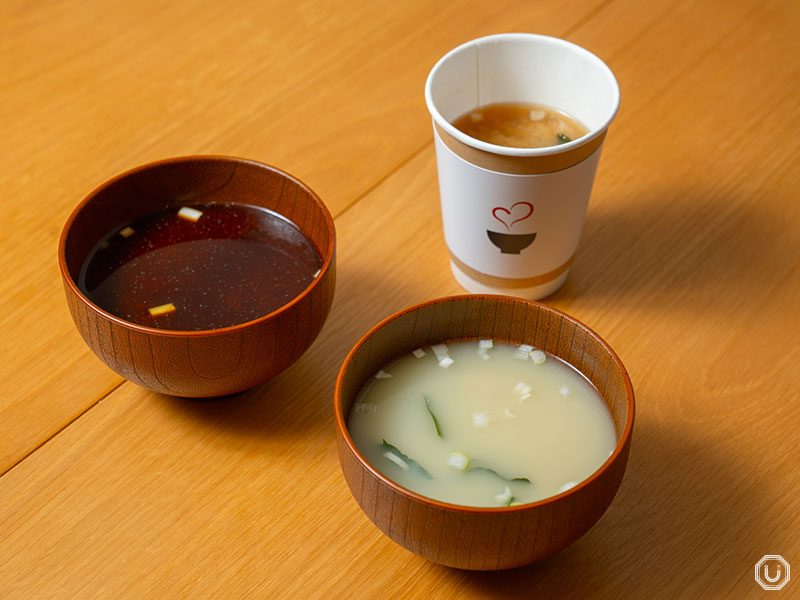
Miso soup at Misomebore
In addition, miso has been gaining attention worldwide along with the global boom in Japanese cuisine, especially for its health benefits.
It’s said to to help with anti-aging and improving gut health, which has attracted increasing interest both in Japan and abroad.
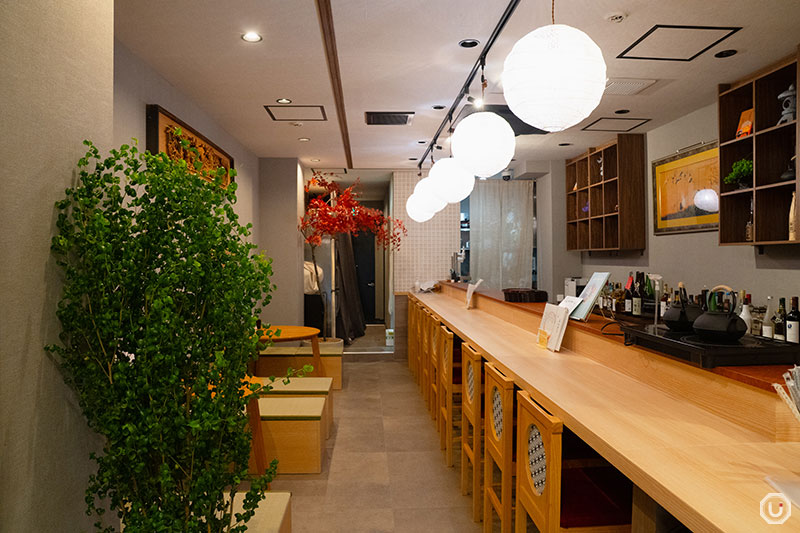
Interior of Misomebore
Misomebore: a tantalizing variety of miso pastes available
One of the best places to fully explore the appeal of this growingly popular ingredients is “Misomebore” in Roppongi, one of Tokyo’s top international districts.
At this restaurant, you can enjoy a wide variety of miso soups made with miso from different regions across Japan.
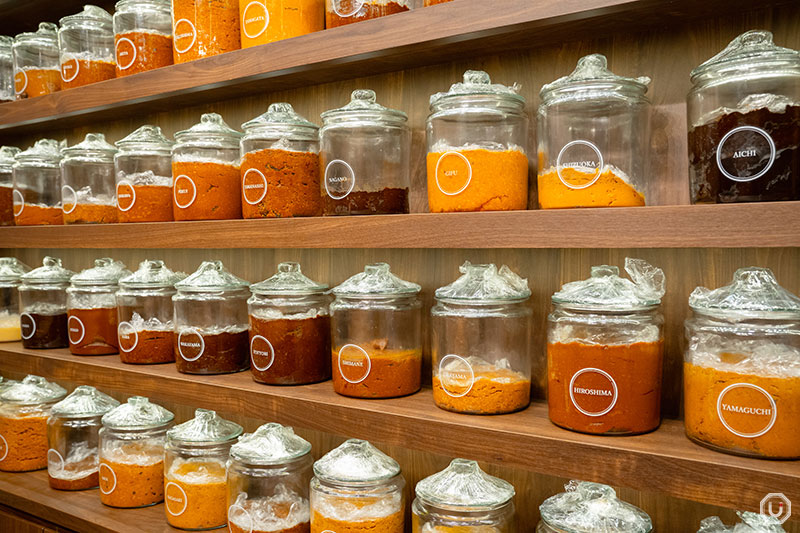
Types of miso from all over Japan
Did you know that there are many different types of miso depending on the region?
There’s white miso with a gentle sweetness, red miso with a deep, rich flavor from long-term aging, barley miso with a fragrant aroma, and the intensely flavorful soybean miso. There’s also blended miso, made by using two or more types of kōji (a beneficial grain culture)—or mixing miso made from different koji—to create unique flavors. Across Japan, these distinctive miso varieties have been carefully preserved and passed down.
Today, most miso sold commercially in Japan is heat-pasteurized and contains preservatives or other additives.
At Misomebore, however, only unpasteurized “live miso,” with active microorganisms, is used.
They carefully select only naturally brewed miso that ferments slowly in a natural environment, without any additives. This is a must-visit spot for anyone with a keen interest in health-conscious eating.
Our recommended miso from Misomebore
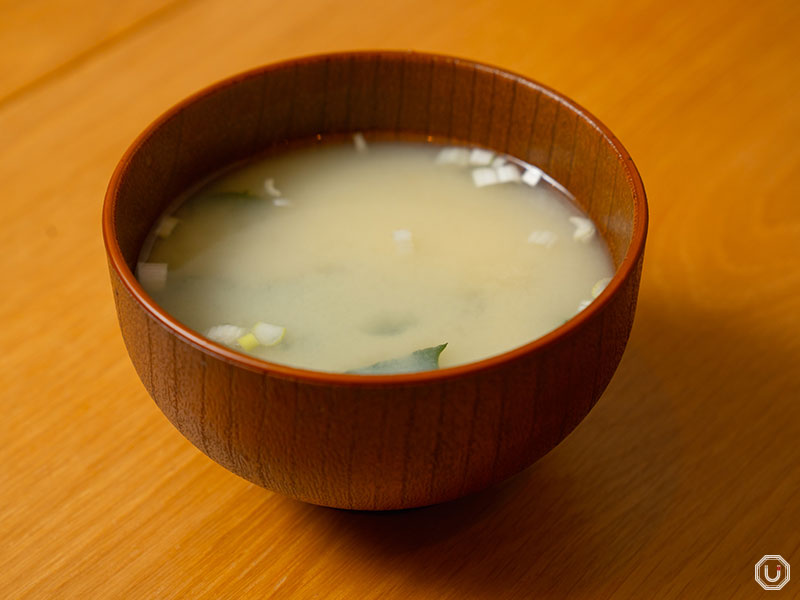
“中屋醸造所 白味噌,” White Miso from Nakaya Brewery 600 JPY (tax included)
The Umami bites editorial team especially recommends the white miso from Nakaya Brewery in Kagawa Prefecture.
Its elegant cream color and mild saltiness create a gentle taste. With the first sip, a mellow sweetness spreads softly across the palate, warming you from the inside out.
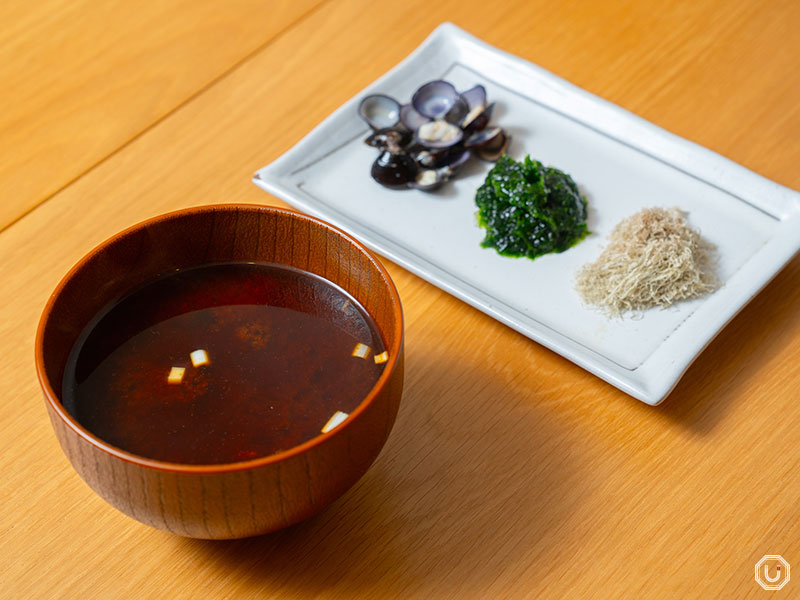
“伊勢蔵 赤だし,” Red Miso from Ise Brewery 600 JPY (tax included)
For those who prefer a richer depth of flavor, the red miso from Ise Brewery in Mie Prefecture is the way to go.
With over 100 years of history, this long-established miso maker uses traditional wooden barrel fermentation, producing a robust, layered taste with remarkable complexity.
Carefully selected broth and ingredients bring out the flavor of the miso
The dashi broth paired with the miso is crafted with no compromise.
Using fragrant katsuobushi (bonito flakes) and premium kombu (kelp), the broth is carefully extracted to maximize the natural umami of the ingredients, perfectly complementing the flavor of the miso.
At Misomebore, every miso soup comes in a generous 250 ml (roughly 1 cup) serving at the same price. Tofu, wakame seaweed, and green onions are included as the standard toppings, making each bowl both hearty and satisfying.
For those who want to customize their bowl, a wide variety of add-ons are available—from grated yam, aonori seaweed, and nameko mushrooms to freshwater clams—all starting at 100 JPY per topping.
By mixing and matching these ingredients, you can create your own personalized bowl of miso soup.
Take-out miso soup to go in Roppongi
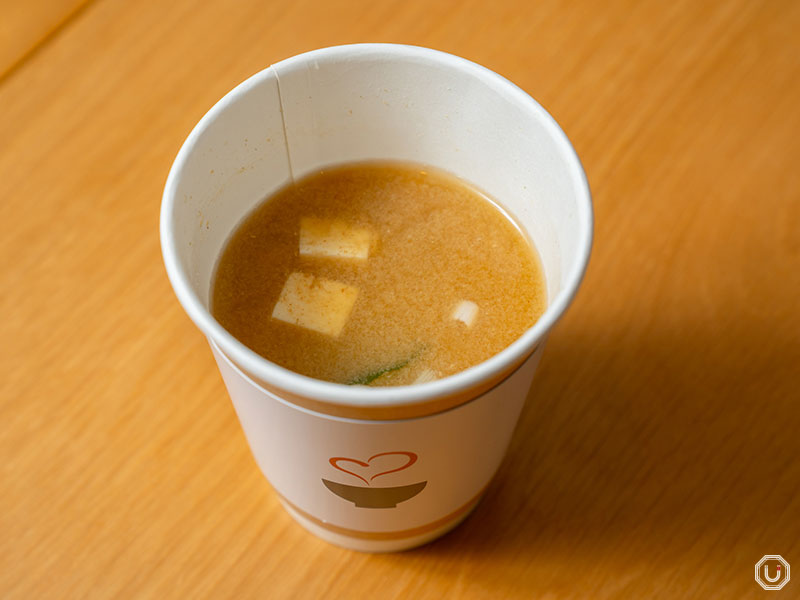
“佐々長醸造 岩手田舎みそ 木樽仕込』,” Iwate Inaka Miso (wood-barrel aged) from Sasachō Brewery 600 JPY (tax included)
At Misomebore, takeout miso soup is also very popular. Given Roppongi’s lively nightlife, many people stop by after a night out to grab a miso soup to-go.
One of the best late-night choices is the miso soup made with Sasachō Brewery’s “Iwate Inaka Miso” (wood-barrel brewed) from Iwate Prefecture.
Made entirely with domestically sourced ingredients and carefully aged in wooden barrels, this miso is known for its firm saltiness and deep, lingering umami.
How to order and choose your miso
At Misomebore, customers can choose from three dining styles after entering: takeout, standing counter, or table seating. This flexibility makes it easy to enjoy in any situation.
With so many miso varieties available, first-time visitors might feel overwhelmed. If that happens, just ask the staff for a recommendation.
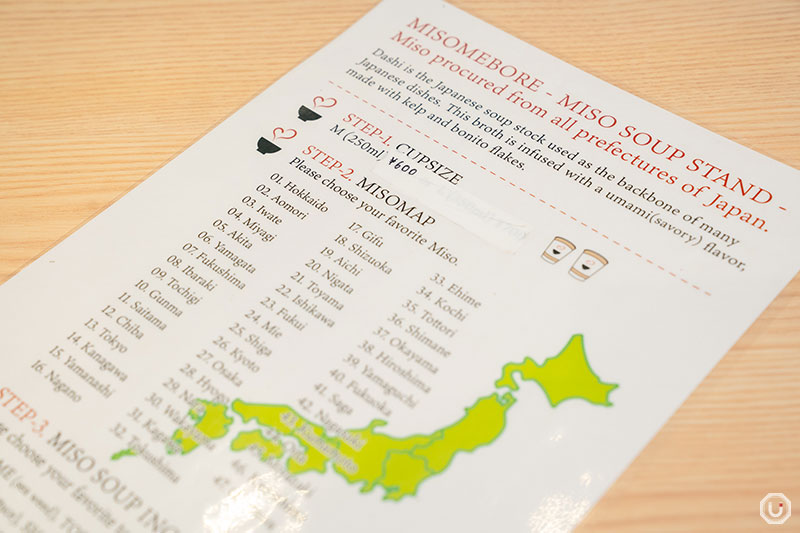
Misomebore supplies English ordering manuals
In general, the darker the miso, the bolder its flavor tends to be. Choosing according to your preferred taste, aroma, or even your condition and mood is part of the fun.
The restaurant is perfect not only for health-conscious visitors, but also for anyone who wants to casually experience Japan’s traditional food culture. Be sure to find the miso soup that suits your taste best.
Enjoy standout miso-based dishes in Japan!
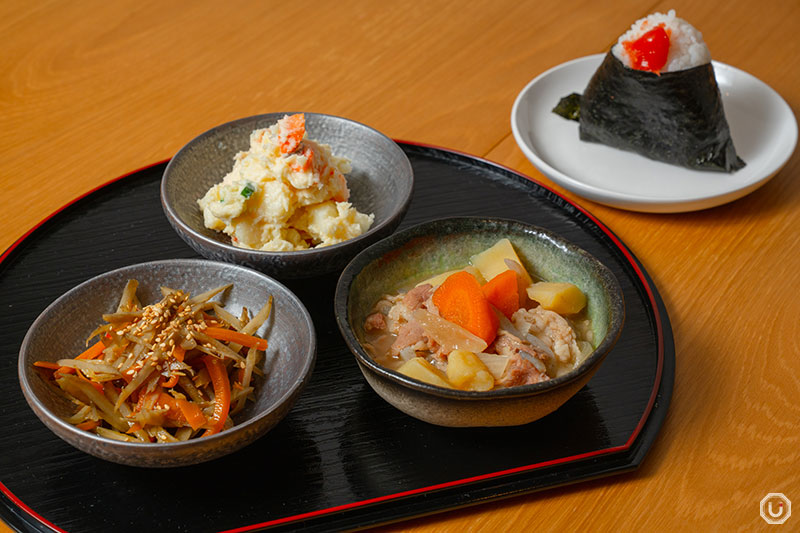
“おばんざい三種盛,” Three Obanzai Side Dishes 1,200 JPY “辛子明太子おにぎり,” Spicy Mentaiko Onigiri 450 JPY (tax included)
At Misomebore, it’s not just about miso soup — the menu also features a wide range of classic Japanese dishes.
The onigiri rice balls are made with Hitomebore, a premium rice variety from Iwate Prefecture, and come in over 10 different types. The gentle sweetness of the rice pairs perfectly with the fillings, making them an excellent match for the miso soup.
All of the side dishes are handmade in-house. You’ll find comforting, home-style flavors like kinpira gobō (braised burdock root, usually with carrot or other vegetables), nikujaga (meat and potato stew), and potato salad that feel both nostalgic and satisfying.
And one of the highlights is the unique pudding made with miso.
You can enjoy two varieties: the refined “White Miso Pudding” made with Kyoto’s white miso, and the rich, sweet “Red Miso Pudding” made with Osaka’s red miso. Both have earned high praise from dessert lovers.
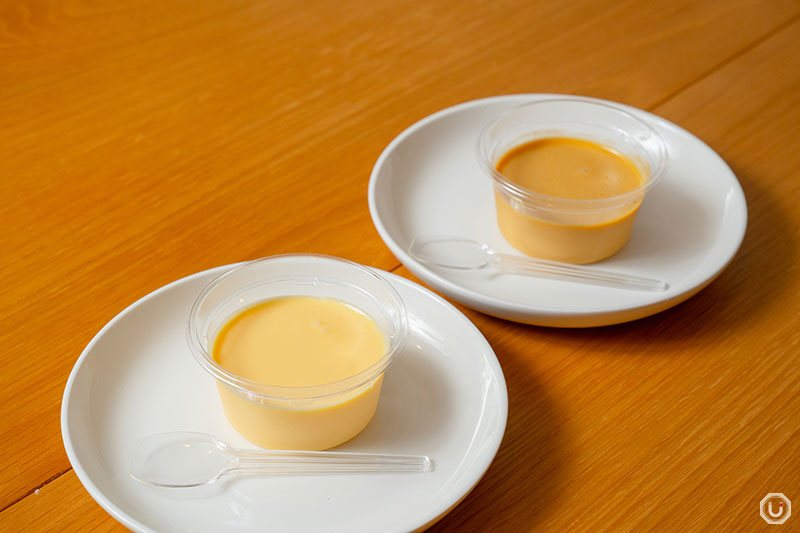
(Left) “白味噌プリン,” White Miso Pudding 660 JPY (tax included) (Right) “赤味噌プリン,” Red Miso Pudding 660 JPY (tax included)
Please note that there is a table charge for using the seated tables, while the standing space in front of the counter is free of charge.
However, when using the standing area, the menu is limited to miso soup, onigiri, and a selection of five obanzai (side dishes).
From Japanese whisky to rare sake, the drink menu is just as impressive!
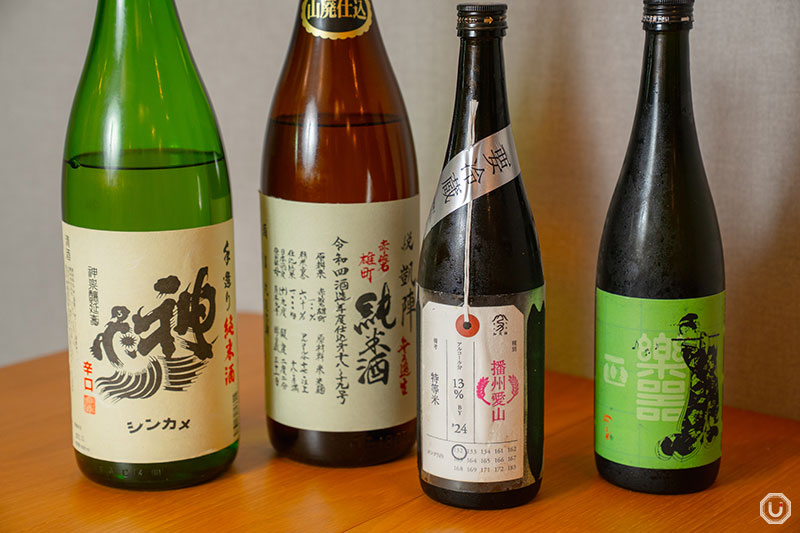
Japanese sake from 700 yen per glass (tax included)
At both the counter and table seating, you can enjoy not only food but also a wide variety of drinks.
Alongside classics like beer and sours, the menu also features Japanese craft whisky and sake, including rare and hard-to-find labels.
The alcohol selection is curated to pair beautifully with miso, bringing out the best of Japanese cuisine.
You can simply stop by for a meal or a bowl of miso soup, or enjoy drinks with your food and finish with a comforting bowl of miso soup to close the night. Misomebore is a new style of miso soup specialty shop that fits any occasion.
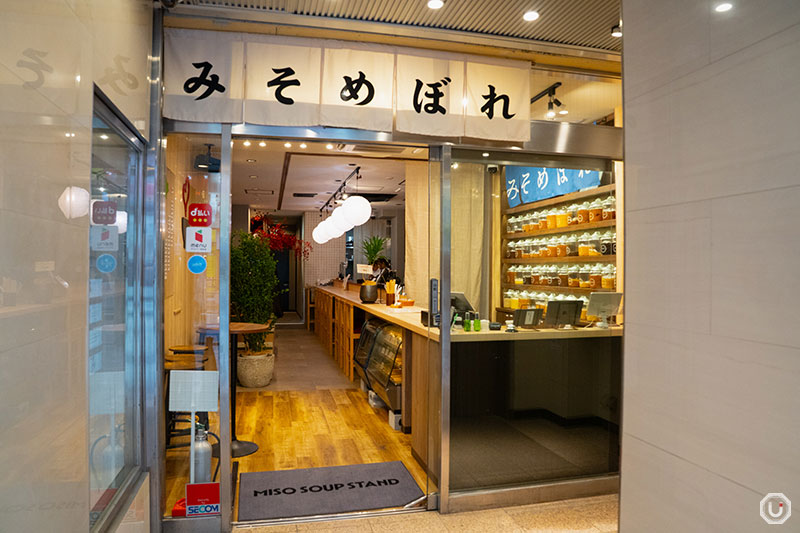
Exterior of Misomebore
Information
| Store name | みそめぼれ Misomebore |
|---|---|
| Address | UF Building, 1F 3-14-13 Roppongi, Minato-ku, Tokyo
|
| Access |
Roppongi Station 30minute walk from Exit 5
|
| Phone number | 03-6721-1425 |
| Reservations | Not accepted |
| Payment |
|
| Service charge/Table charge | (when entering until 22:00) 600 JPY table charge, (when after 22:00) 1,000 JPY table charge |
| Hours | Mon-Sat. 12:00-15:00, 18:00-5:00 AM Sun.& nat’l holidays 12:00-17:00 |
| Closed | No fixed holidays Unscheduled holidays |
| Seating | 16 seats 9 counter seats, 8 table seats |
| Smoking | All seats are non-smoking |
| Official website | https://miso-mebore.com/ |
| Other information |
|
※Menu contents, prices, store information, etc. are current as of September 2025.
